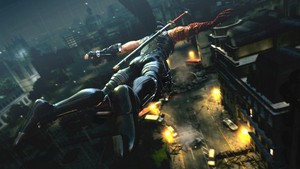
Ninja Gaiden III recently sliced its way to store shelves with much hype and anticipation from long-time fans, but developer Team Ninja’s hopes to release a Ninja Gaiden title with mass market appeal unintentionally cut right through the hearts of its core fanbase that’s supported the studio for nearly a decade. With casual gaming rising faster than Ryu’s famed Izuna Drop, it’s understandable why the team took such a path for NGIII, but in the end it ultimately failed to find its niche.
A Slice of Retrospective
Before jumping in headfirst, let’s quickly sneak back to the series’ beginnings, way back to 1988 and Ninja Gaiden on NES. While initially famed for introducing cinematic cut scenes, the series’ heroic protagonist Ryu Hayabusa jumped and slashed through demons, slaying huge bosses in a tough-as-nails 2D action platformer that’s still revered as one of the system's finest titles. Technology limitations of the time found our in-game hero heavily pixelated and lacking personality, but gamers were instantly connected to him through the game’s revolutionary use of cut scenes. While we spent hours on end attempting to play jump rope with the Windmill Shuriken throughout entire levels, system limitations lent it a strange orange cardboard cut-out appearance. Still, in the fans’ minds that shuriken was as deadly as Ryu’s legendary Dragon Sword; gamer’s imaginations completed the visuals where the pixels left off back in this era. The game unsurprisingly went on to spawn two respectable sequels on the NES, securing its place in the industry.
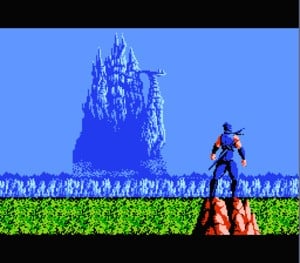
In 2004, under the leadership of Tomonobu Itagaki, Team Ninja performed the impossible and transformed the hardcore action of the series’ past into the third dimension for the very first time with Ninja Gaiden on Microsoft’s Xbox. Ryu’s deadly aerial manoeuvres were as quick as his godlike reflexes, and his Windmill Shuriken looked every bit as deadly as we’d imagined. While the majority of mainstream games had evolved to become more cinematic throughout the years, for the most part their level of difficulty had drastically decreased in the process. Gone were the days of one-hit deaths and epics without checkpoints, but somebody must’ve forgot to tell Team Ninja, because it brought the painful difficulty back with a vengeance. Still, critics rejoiced in the game’s hardcore lustre, and the game holds an aggregate Metacritic average of 91 today, with 13 of the reviews awarding it a perfect score. Why? Because the game’s balanced fairly and rewards the player for learning the intricacies of the game’s deep combat system, while punishing each and every single misstep made along the way. When Ryu falls to the ground in defeat, it’s not the game’s fault, it’s yours. Coupling this rewarding combat system with the campy storyline of bloodlines and über powerful demon fiends rising to power brought the game to life in a way that far surpassed the hopes and dreams of long-time fans, and has since spawned multiple remakes and sequels, with the most recent being Ninja Gaiden Sigma Plus for Vita.
Disembowelling Ninja Gaiden III
Recently, Ninja Gaiden III cut its way to store shelves around the world, but even before launch, anticipation was balanced with a dose of scepticism. Itagaki left the company in 2008, shortly after releasing Ninja Gaiden II on the Xbox 360, and was quickly replaced with Yosuke Hayashi, who claimed that the studio relied too heavily on “sex and violence”. Still, his early works found the team remastering Itagaki’s two Ninja Gaiden titles exclusively for the PS3 with the Ninja Gaiden Sigma series. These HD remakes not only added a beautiful coat of finish, but also further balanced the insane difficulty of the originals and added in a few extras, with the most notable being the exclusive levels featuring the lovely Rachel as a playable character. Surprisingly, Ninja Gaiden Sigma II even bounced in a perverted motion controlled extra (hint: shake the controller during cut scenes), and it looked as if Hayashi had fit the bill for Team Ninja perfectly, but his real brainchild creation had yet to be released.
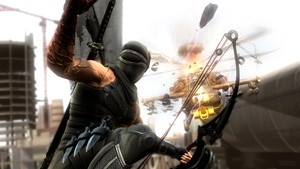
Hayashi’s Ninja Gaiden III, well, it’s a mixed bag; not of body parts, because you can’t cut those off any more. Upgradable weapons, ninpo and precision controls are just a few of the elements that were gutted in the redesign, while new elements like wall climbing and cinematic Quick Time Events have taken their places. Difficulty was significantly toned down and the brutal action is as over-the-top as ever, making NGIII a visual feast to the eyes. Ryu is even unmasked in-between missions and we get to see a much deeper side of the assassin than ever before, as he struggles with his body that's been cursed from the sins of his past.
While the new storyline is a welcomed addition, the gameplay fell far short. Initially, it seemed as if the small changes to Ryu’s move set worked, but the faults were only overshadowed by the intensity of the action. Ryu frustratingly auto-tracks to enemies when evading and ninpo attacks and ultimate techniques both find him effortlessly destroying multiple enemies with a single touch of a button. Once the initial impact wears thin, NGIII becomes a mindless hack-and-slash title that’s tedious and wholly unimpressive — a far cry from the deep, rewarding combat system that made previous entries so captivating.

Understanding the Niche
Why would Hayashi’s Team Ninja decide to make such drastic changes to a tried-and-true gameplay formula? One only has to take a look at the current state of the gaming industry to find the answer: millions of gamers flood onto the servers of casual freeware Facebook games daily; iOS and Android marketplaces are loaded with a full range of games that have acquired well over a billion downloads; Nintendo’s Wii, Sony’s own PlayStation Move and Kinect for Xbox 360 have all drawn in new gamers to home consoles by the millions. There’s never been a better time to try and lure curious gamers to games they’d never before experienced and Hayashi obviously thought that he had just the trick to do so with Move and NGIII’s Hero mode. These allow gamers leaning on the more casual side of the spectrum to wield Move to slice and dice their way through the game, fully experiencing the storyline and ultra-violence with absolutely no chance of being defeated. There’s even a nifty (ridiculous) sword peripheral to insert the Move controller into, making you feel like a complete… um, well... maybe that’s better left forgotten.
Sadly, poor Move implementation and the toned down difficulty put in place for casual gamers flowed over into the higher difficulties, and NGIII failed to find its niche. Look deeper and we find the real underlining issue here: NGIII appeals to multiple groups of gamers, but it never secures its foothold with any specific group. Here at Push Square, we’re experienced gamers, but even here each of us holds our own preferences on game types and genres. Almost everyone can attribute to this, regardless of which pop culture sector is involved; we all have a specific genre that appeals to each of us the most. In turn, developers have to keep a keen eye on the current paradigm shifts in the industry and develop their games in such a way that it’s aimed at one centralised market, while holding creative or unique elements to draw in the masses, if they desire to do so.
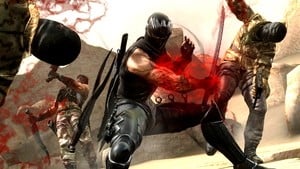
For example, Naughty Dog’s Uncharted series is a cover-based shooter at heart, but its captivating cast of characters, outstanding visual flare and cinematic storytelling has drawn in audiences from all facets of the gaming spectrum, by simply making the games accessible by offering an Easy mode. You can also look over at Nintendo’s family-friendly Super Mario titles, which are accessible and fun for all ages, but also offer steep challenges for those desiring to dig in a bit deeper.
There are wildcards that break the rules though. From Software’s PS3-exclusive cult hit title Demon's Souls as a perfect example. It was aimed directly at the small hardcore crowd, but its unforgiving gameplay features a battle system that only punishes the player’s mistakes (sound familiar?), and it started drawing in crowds that don’t normally dabble in this genre by doing so. While it initially released with limited copies — just as most niche games do — its overwhelmingly positive reception by critics found the game in extremely high demand. There’s clearly a market for all types of games, but regardless of the title, it has to possess a central focus — exactly where NGIII falls short. Move support and Hero mode were implemented to attract more casual leaning crowds, but the unintuitive implementation and ‘waggle’ controls quickly become tiresome. Hyper violent cinematics and deep narratives looked to draw in the mature action fans, but the repetitive gameplay quickly lost its appeal. Hardcore gamers, the series' focus, were left with a battle system that’s a long shot from the deep, intuitive system they’ve grown to know and love over the years.
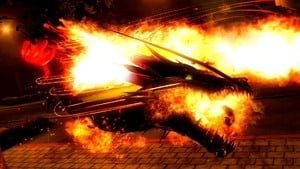
Reimagining Ninja Gaiden III
Is it possible to have a Ninja Gaiden title that can gain mass market appeal? Definitely, and one only needs to look towards Team Ninja’s Ninja Gaiden: Dragon Sword on DS. Offering an innovative touch screen control interface to draw in the masses, Ryu’s move set was fully intact, and the famed fast action gameplay was ever present. A balanced initial difficulty setting allowed gamers of all experience levels to see the game throughout its entirety, but upon completion, also unlocked the brutal difficulties that the hardcore crowds desire. Tomonobu Itagaki and his team had a single focus with Dragon Sword: create a unique but recognisable Ninja Gaiden title that features an innovative touch controlled interface as an attraction, while offering multiple difficulties to please gamers of all experience levels. Needless to say, it worked, and it’s a fantastic entry into the series, with the hardcore crowd’s only major complaint being that the game wouldn’t allow them access to a higher difficulty option from the start.
This same formula could’ve worked with NGIII too. A better Move implementation is a given, but not necessarily needed here at all. We've seen variations on Hero mode in the Sigma titles, where it was only unlocked after dying multiple times in the same section, only needed to be publicised as it was with NGIII: included for those who desired to play the game this way, but not going so far as ruling out defeat. Difficulty balancing for the average gamer to enjoy is completely acceptable, and hardcore players crave masochist difficulties, but it needs a finely tuned combat system. Retaining the deep narratives, cut scenes and cinematic Quick Time Events while reintroducing the multiple upgradable weapons and ninpo attacks would keep the series true to its past, bringing Hayashi’s creative new touches to the forefront in a way that fans new and old alike would very likely enjoy devouring.
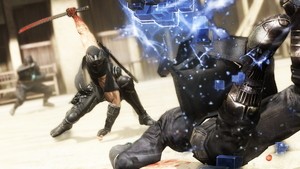
Cutting Ahead
Ninja Gaiden III has yet to scratch the surface layer off any sales charts, but there's a glimmer of hope that Nintendo’s upcoming Wii U could fare better. Hyper violent titles like No More Heroes and MadWorld have been sleeper hits on Wii, and NGIII could very well still find its niche. While Team Ninja has been eerily silent on the game’s poor reception, we can only hope the game's poor reception has been a lesson hard-learned, and that the future holds the possibilities of more great Ninja Gaiden titles.
What do you think? Does Team Ninja need to refine what it's started in Ninja Gaiden III, or should the series return to its roots for future iterations? Let us know your thoughts in the comments section below.





Comments 5
Punishing games are fun. If you take the challenge away, then you better be very sure that the game-play stands up on it's own. Some games like Uncharted (on normal) and Assassins' Creed don't have much challenge, but they are interesting and fun enough to keep the player motivated to play. I'm not an expert on Ninja Gaiden, but I suspect, without it's difficulty that makes you try again and again, there isn't enough to it, to keep the gamer interested. Hence the failue of Ninja Gaiden 3.
It's so RIDICULOUSLY hard to balance difficulty that I can't blame them for failing on this attempt. I'm in the crowd that loved Demon's Souls, because I genuinely feel that the game did a superb job of making it feel like failure was my own fault. On the other hand, I've tried Ninja Gaiden Sigma, and I did NOT feel the same way. In fact, as a general rule, games that throw more and more enemies at you at once automatically trend towards unfairness. Even Uncharted (which I love) has this problem on higher difficulties, although it's definitely better balanced than some other games (such as Eat Lead, a game I liked on easy but loathed on hard).
Interesting read. I think you hit it spot on that this title suffers from target audience muddiness. It tried to have the best of all possible worlds, but didn't succeed. Whereas a title like Little Big Planet can appeal to gamers of all shapes and sizes.
@billy-beauts With Ninja Gaiden III, the loss of difficulty is a blow, but it's the fact that you're not in full control of the character that's the deepest blow here. There's quite a bit of difficulty on the highest setting, but the increased difficulty doesn't make it anymore fun to play.
@Stuffgamer1 Believe it or not, Demon Souls is actually easier to jump into than Ninja Gaiden. The limited skill set simplifies the combat when in action, and makes it more accessible, which is a key reason for its success.
Ninja Gaiden on the other hand is overwhelmingly deep to those new to the series (I've actually penned every combo for every weapon in both the Sigma titles for quick access). While the Sigma titles' will put you up against 3-5 enemies at once, if you pay attention carefully, you'll notice that they don't all attack at once, and only the same enemy type will respawn once their defeated — keeping a constantly manageable playing field. You're dead-on though, Ninja Gaiden doesn't offer quick satisfaction like Demon Souls, and I think that's what Team Ninja was trying to achieve with Ninja Gaiden III. But, Ninja Gaiden III literally swarms you so deeply in enemies that you can't even see Ryu at times, and well, that isn't the Ninja Gaiden way.
@bauckster Yep, that's just it. Game's like Journey and Little Big Planet are solely created to appeal as such from the ground up, while Ninja Gaiden was built for the hardcore crowd, but transitioned into something that tried to appeal elsewhere with NGIII.
Excellent article Christropher, a genuine well researched read.... top marks.
I grew up with the Gaiden series on the NES, and loved the "reboot" on the Xbox. I've devouted countless hours to each incarnation of the series, even re-buying and playing the Sigma series on the PS3 and Vita. But a 10 minute play on the trial/demo of Gaiden 3 instantly told me Tecmo had lost the gameplay principles the series was famed for............. shame.
Show Comments
Leave A Comment
Hold on there, you need to login to post a comment...